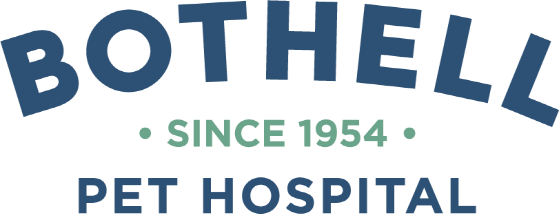The Anatomy of Your Dog or Cat
 Rather than a specific case story this month, we thought it might be fun (and informative) to provide you all with a basic overview of your dog or cat’s anatomy.
Rather than a specific case story this month, we thought it might be fun (and informative) to provide you all with a basic overview of your dog or cat’s anatomy.
What is anatomy?
Anatomy is defined as the study of the structure of the body. Anatomy contributes to a pet’s basic appearance–from the way they walk, hold their heads, and wag their tails, to the way they chase a ball–all of which helps us recognize when something is wrong and may need attention.
We as veterinarians study canine and feline anatomy to help us understand how the body works, and to appreciate the appearance of “normal” structures in order to identify abnormalities when they occur.
You can imagine how important this knowledge is—both in the examination of your pet, and to help us make plans for treatment when needed. Anatomy aids us in both medical and surgical cases, particularly when we need to physically “fix” a part of a patient’s anatomy.
There are similarities…
Although every dog and cat is a little different / has a few anatomical variations, they all have the same basic structure. In fact you may be surprised to learn that our canine and feline companions’ bodies and organ systems not only are similar to one another, but to ours as well. We share very comparable cardiovascular, respiratory, digestive, musculoskeletal and nervous systems, to name a few.
Due to these similarities, we are often treating disease processes and prescribing medications that may be used in human medicine, in addition to veterinary-specific medications.
And differences…
However there are some interesting differences between dogs, cats and humans. For example, dogs and cats have:
- Four legs, and stand on their digits
- Thick haircoats that cover their entire bodies
- The ability to sweat only at their footpads and nose
- Independently moving ears (and tail) for hearing and communication
- Anal glands, which some say are used for scent marking
- Teeth shaped for chewing and shredding meat (30 in a cat and 42 in a dog)
- Claws and paw pads
- Very sensitive noses
- Tongues shaped to pick up water for drinking and aid in grooming
- A tapetum lucidum: the reflective layer at the back of the eye (often causing a green glow in photographs) contributing to better night vision
- A third eyelid (called a nictitating membrane) in each eye, with a gland that helps make tears and protects the eye
Communicating Location
In addition to anatomical structures, the study of anatomy also involves learning terms that help communicate the location of a structure, including:
- Medial: toward the midline of the body
- Lateral: toward the outside of the body
- Cranial: toward the front of the body
- Caudal: toward the back of the body
When you describe your animal’s anatomy, pretend you are the animal: when you say right, are you referring to your pet’s right side? This is especially helpful when you call us about a lameness you may have noticed at home: which leg is your pet lame on, a front limb or hind limb? His or her right or left side?
Want to Learn More?
A great place to learn more about your pet is on Washington state’s veterinary school (WSU) website, where you’ll find extensive anatomy information and diagrams.
And of course, never hesitate to ask the veterinarians at Bothell Pet Hospital during your next visit!














Comment (1)
This is very helpful thank you, I w am studying Animal Nursing Assistant level 2 and would love more information.
Thank you
Comments are closed.